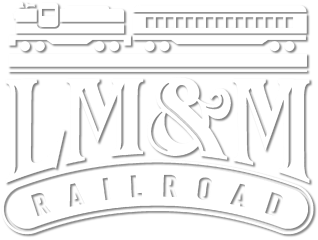LOCOMOTIVES
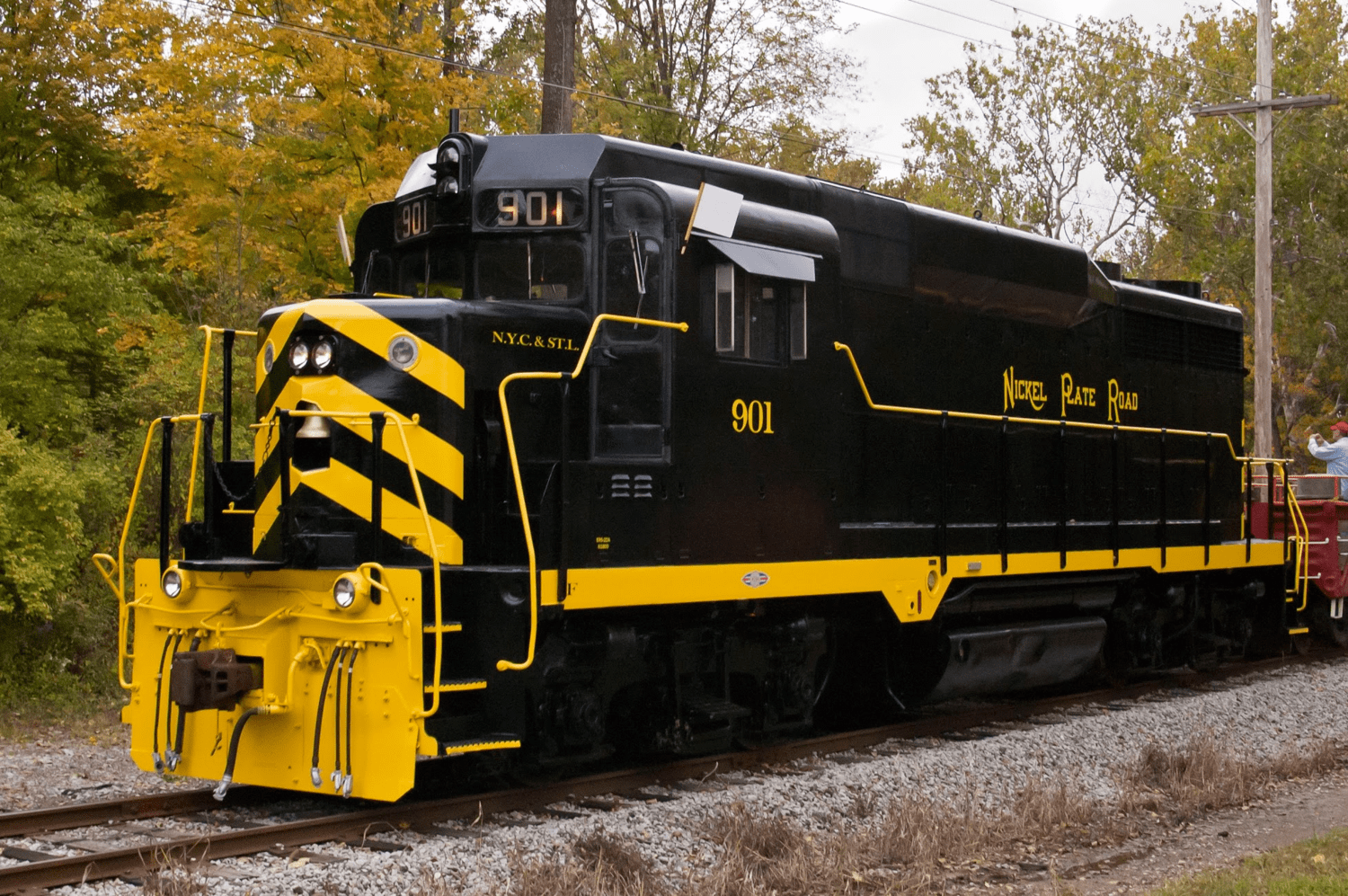
CRC 901 – EX-NKP GP30:
901 is a EMD GP30 delivered to the Nickel Plate Road in November 1962. It was one of ten GP-30s purchased by the Nickel Plate, numbered 900 to 909. The total cost for the ten units was 2.07 million dollars. They were the first freight units on the NKP with low short hoods to provide better visibility. Shortly thereafter the Nickel Plate merged with the Norfolk and Western in 1964, and 901 became N&W; #2901 . It served the N&W; and later Norfolk Southern until purchased by the Indiana & Ohio in 1986.
In 2011, thanks to contributions from the Nickel Plate Historical & Technical Society, CNRY #85 was restored to as-delivered Nickel Plate colors. It was then dedicated to former employee Robert A. Zoellner.
Currently, 901’s sister-unit Nickel Plate 902 is pulling the Cincinnati Dinner Train.
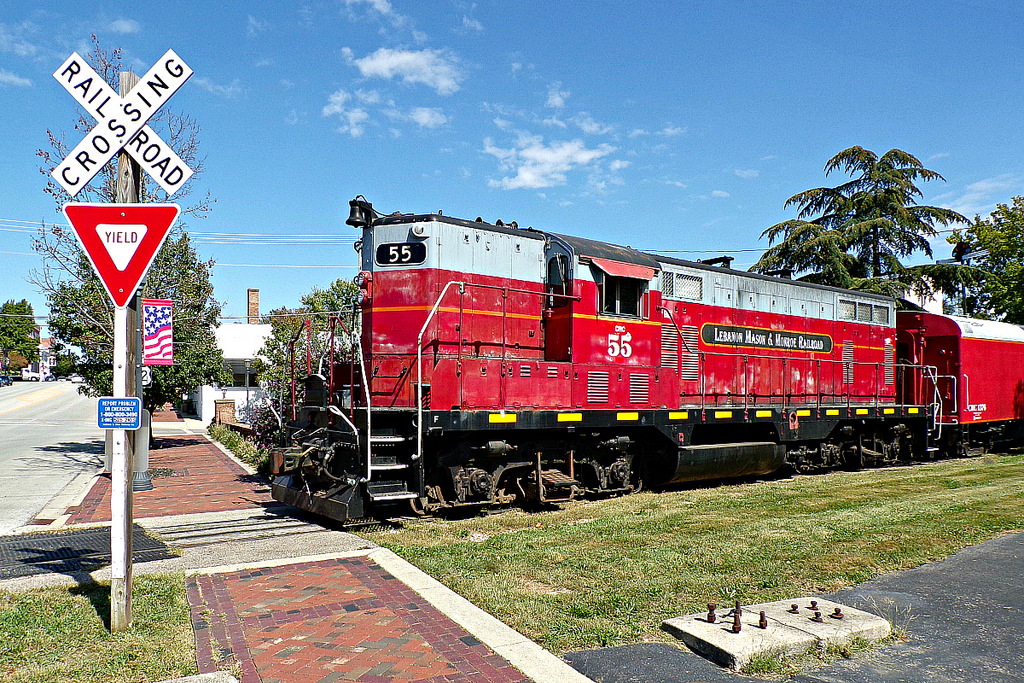
CRC 55 – EX-C&O GP7
The oldest GP7 still operating, #55 was ordered by the Pere Marquette Railroad from General Motors’ Electro Motive Division in 1947, but was delivered to the Chesapeake and Ohio Railway as a result of a merger. The locomotive’s original number was 5704 and was purchased by the Indiana & Ohio around 1987.
The 1500 horsepower locomotive was built in May of 1950 and was ballasted to 248,000 lbs., the heaviest GP7’s on the C&O.; GP stands for General Purpose, and the 55 was built as a dual service locomotive. It was capable of moving both passenger and freight cars, and was originally equipped with a steam generator to provide heat for passenger cars in cold weather.
PASSENGER COACHES

LACKAWANNA COACHES – CARS 101-104
Our primary coaches were built for the Delaware, Lackawanna, and Western Railroad in 1930. These are historic rail cars have a very unique vintage charm. The large picture windows open to let in the cool summer breeze as our train meanders down the track. These coaches are equipped with fans to circulate air within the car and keep the interior at a comfortable temperature. The plush vinyl seats can reverse direction allowing groups to easily sit facing one another. The Lackawanna cars are the primary equipment used on the LM&M; Railroad and represent the best that vintage railroads have to offer.
Coaches 101-104 were originally built as a partnership between the Pullman Company in Chicago and the Edison Corporation.
These coaches did not require a locomotive because each car was self-propelled by four 3000-Volt 230-horsepower DC electric motors, receiving electricity from overhead catenary wires. Thomas Edison himself helped design the electric propulsion system used, and the 83-year old Edison was at the throttle on the train’s first run. Though each car was equipped with individual controls, two or more cars could be coupled together as a train and operated by a single engineer in the lead car. This was known as Multiple-Unit (MU) operation.
The MUs operated in commuter service in the eastern New Jersey suburbs of New York City until 1984, when they were retired by New Jersey Transit and sold at auction. When purchased by the Indiana & Ohio, the MUs were relieved of their motors and named after historic and significant places along the current LM&M; line. The 101 Mason, 102 Hageman and 103 Turtle Creek each hold 72 passengers, and Car 104 Lebanon holds 54 passengers and features a snack bar
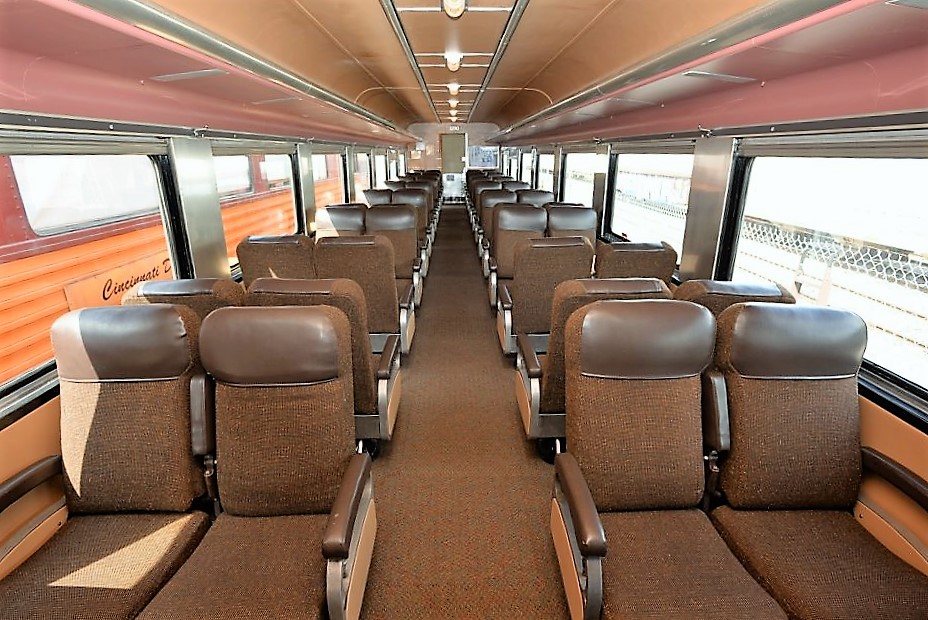
MILWAUKEE ROAD 3200 – DELUXE COACH
This long distance coach car was featured in the 2015 movie Carol. The 3200 car seats 60 passenger. The car features comfortable reclining chairs, and large picture windows.
The 3200 was built be the American Car and Foundry Company (ACF) for the Louisville and Nashville Railroad. The L&N used the car on its Humming Bird passenger train between Cincinnati, OH and New Orleans, LA.
After retirement from the L&N in the 1960s the car was sold to the Pittsburgh and Lake Eire Railroad. The P&LE purchased the coach for commuter train service in the Pittsburgh area.
After its brief stint in commuter service, the 3200 was sold to the Ft Wayne Railroad Historical Society for excursion service. The car would later be owned by the Friends of the 261, Lake Central Rail Tours, and the Cincinnati Dinner Train before coming to Lebanon for use on the LM&M Railroad.
The 3200 is currently painted to honor the Chicago, Milwaukee, St Paul, and Pacific Railroad, also known as the Milwaukee Road.
The car is named the Montgomery to honor both the L&N and the CL&N. The L&N stopped in Montgomery, AL. The CL&N stopped in Montgomery, OH.
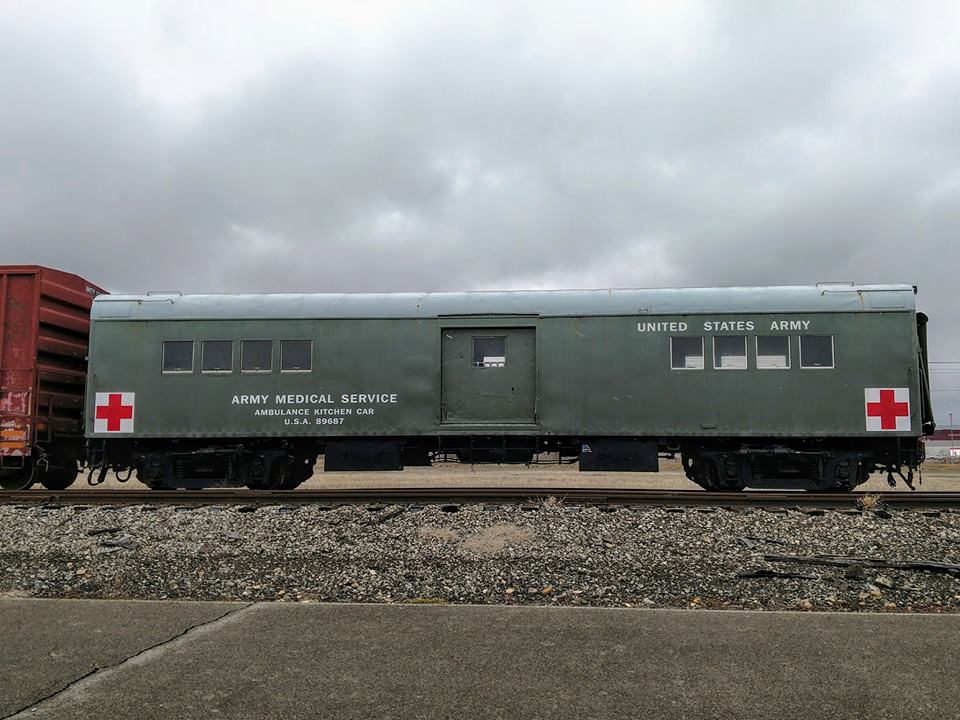
QUEEN CITY TAVERN – 1379 EX-US ARMY
The Queen City Tavern is the LM&M Railroad’s open air concession car. The large baggage doors slide open on warmer days, so passengers can take in the breeze.
The car was build as a kitchen car by St. Louis Car Company for the US Army in the 1960s. The car was originally numbered USA 89687. The car was later sold to Amtrak and renumbered 1379. Amtrak converted 1379 into a baggage car and used it regularly until the late 1990s as a part of their “heritage” fleet.
The LM&M Railroad also owns ex-Amtrak 1376. That former kitchen car is used a power car. It contains a 480v HEP generator that provides electricity for the passenger cars.
OTHER

DT&I 116 CABOOSE
The caboose was built for the Detroit, Toledo, & Ironton Railroad in 1949. The DT&I; assigned it number 116. The caboose has been lovingly restored by its owner inside and out. Our caboose seating is a truly unique experience that literally puts you in the conductor’s seat. The elevated seats provide panoramic views of the scenery. Be sure to book in advance as seating in the caboose is limited to twelve and the caboose is only available on select departures.
